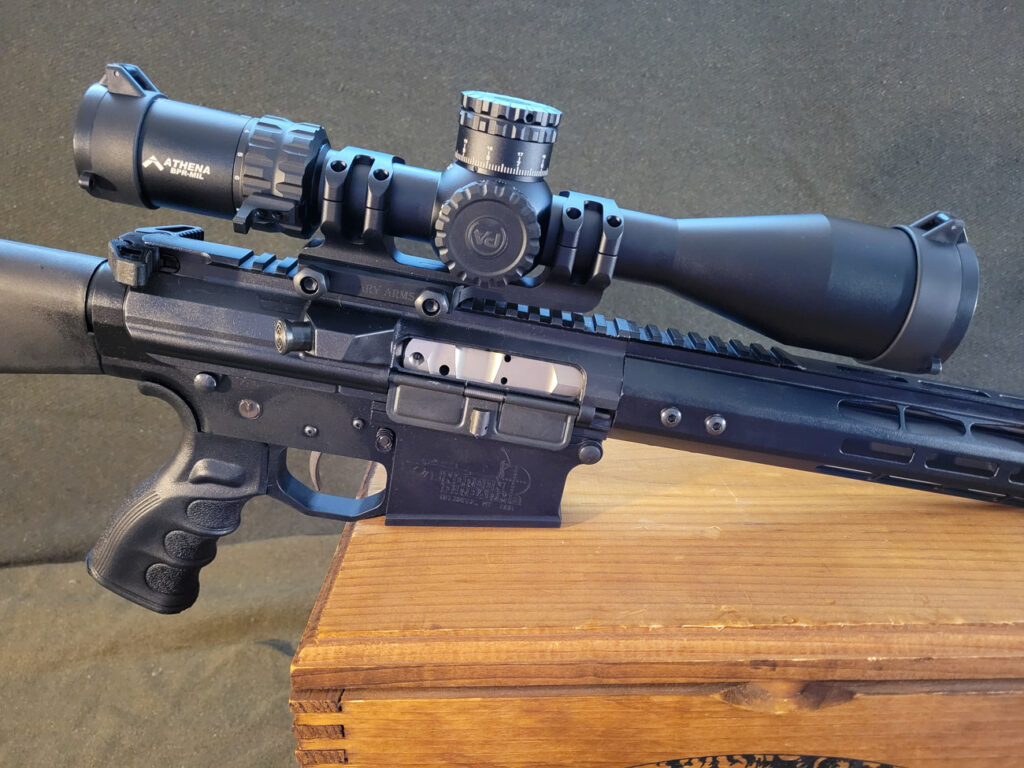The past few years have seen some of the most innovative and competitive rifle scopes come into the market. The everyday enthusiast of any shooting discipline has multiple solid options for rifle scopes that can fit any budget and/or have any feature.
Primary Arms was gracious enough to send us this SLX 3-18×50 FFP scope to do a thorough hands-on review. All opinions are our own honest thoughts.
Overview
One of the best price ranges that have seen some upgraded optics is the $400-$600 price range. Seems like every scope manufacturer has tossed their hat in the ring to conquer this price range, and Primary Arms is one of them. Solid reticle technology with quality products is a great description of what this company has to offer. The optic on the docket today is the Primary Arms SLx 3-18×50 which is available for preorder as of the writing of this article.
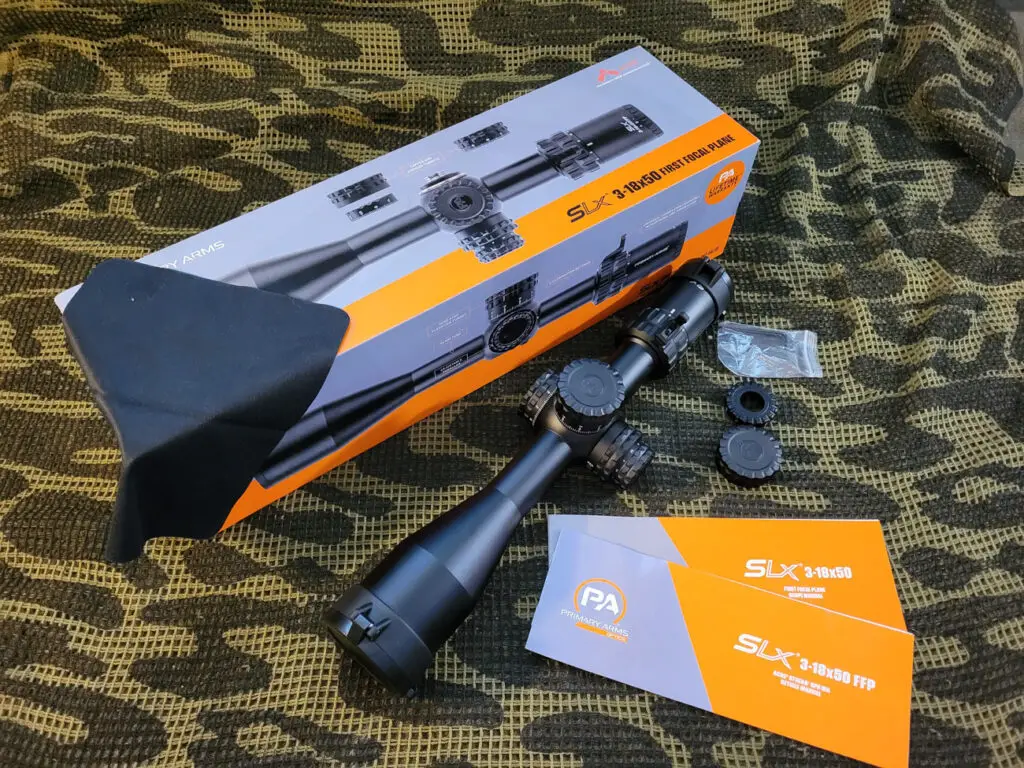
Reticle technology is an aspect of modern sporting optics I’ve been following for some time. Growing up to shoot to 600 yards using a standard MIL-Dot reticle was great to learn from, however, at some point, I wanted something more advanced. Primary Arms has been offering some very strong reticle choices that think outside the box regardless of what application you’re shooting in.
The SLx 3-18×50 offers some very strong features that have made me more excited than usual about rifle glass. A robust design that offers different turret options for different types of hunting, and a reticle that features methods for ranging targets and holding for wind and elevation make this a dangerous scope. And being a 3-18 rifle scope places it in the sweet spot for both hunters and steel shooters alike. You’ll want to stick around to see how this optic went through testing and if it justifies the $500 price tag that Primary Arms has placed on it.
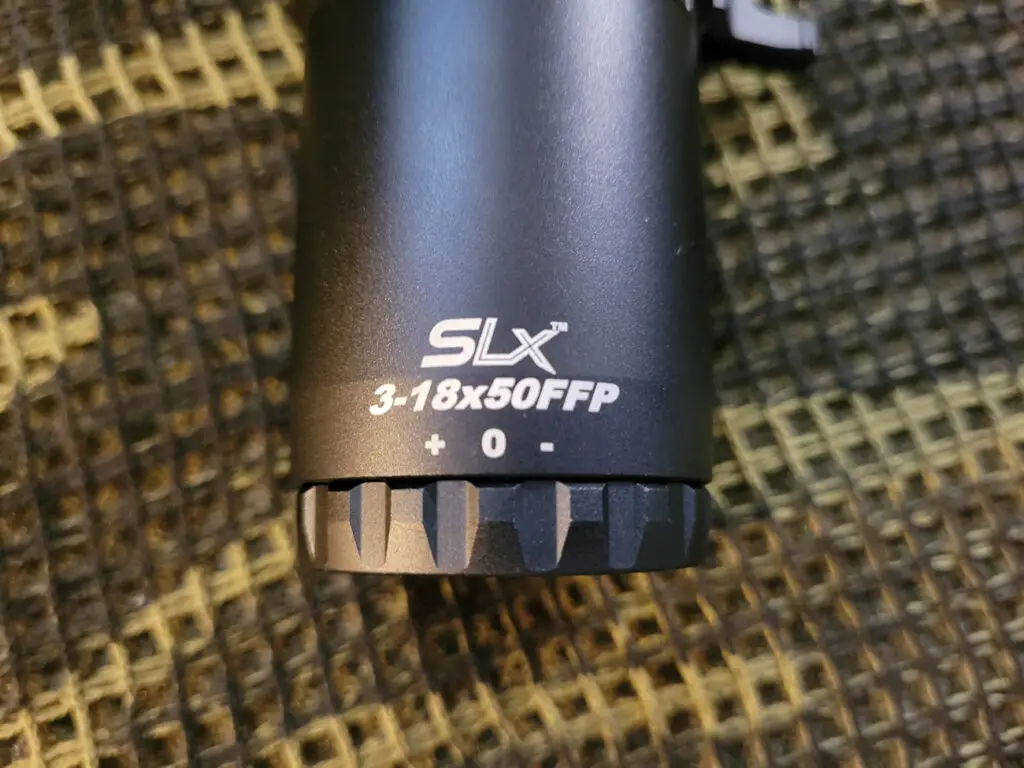
First Impressions
This is an impressive optic at first glance. It’s also the only scope box I’ve opened that had a completely separate turret cap that was taken out as an accessory. The windage turret that comes installed on the SLx 3-18 is a capped turret, but you can actually run either exposed or capped turrets depending on your application. Just 3 set screws and you can pop off the capped turret system and install an exposed turret system that looks like it was made to be on the scope. It’s not an uncommon thing to run multiple turret tops on your scope but to have that in an optic in this price range is unheard of.
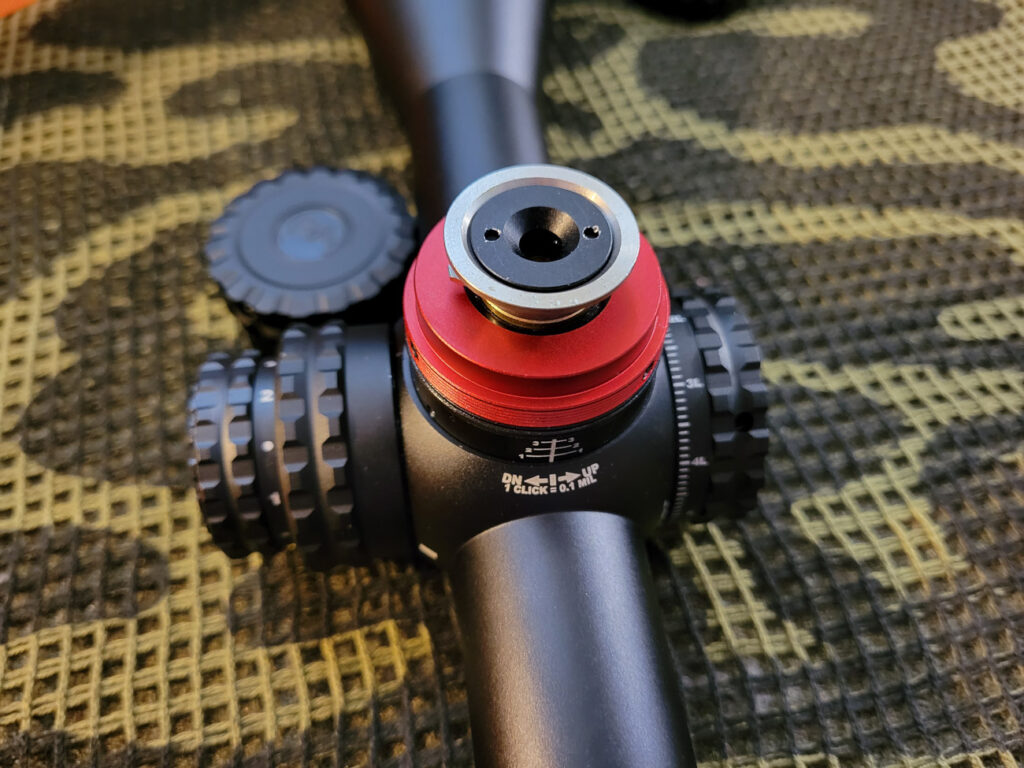
I enjoy opening Primary Arms Optics as they have very beneficial product manuals that allow you to fully understand the scope you’re using. Why dish out the money for an optic you’re not going to use to its full potential? It also comes ready to mount out of the box with lens caps and a battery already installed for illumination. The last thing that really dropped my jaw was the reticle. With a very small chevron as your center point, this was a very well-thought-out sighting system that had ranging and holding systems while keeping the glass clear. It is an extremely busy space to look through, especially being first focal plane, but I had no doubt that this scope would tear it up at the shooting bench. Even without going through the testing, this scope had me excited to go to the range.
Features
When shopping for scopes, I like to focus on one of two things. The common thread I’ve found is that you can purchase a scope that’s rich in features but will suffer in the glass clarity department. You can also go the other way on this and get some crystal clear glass at the expense of some of the fancier features that sometimes go into the scope. Sometimes, this means giving up things like magnification range, illumination, or you may have to move to a second focal plane scope in order to get the clarity you want. That trade-off has never been sweeter with the SLx 3-18×50. Here are the features you get for glass that I find to be extremely well-presented and clear:
- First Focal Plane Reticle
- Pre-Installed Zero-Stop
- Both Capped and Uncapped Windage Turret Options
- Illuminated Reticle
- Magnification Throw Lever
- Custom ACSS Athena Reticle Design
- In-Reticle Target Ranging System
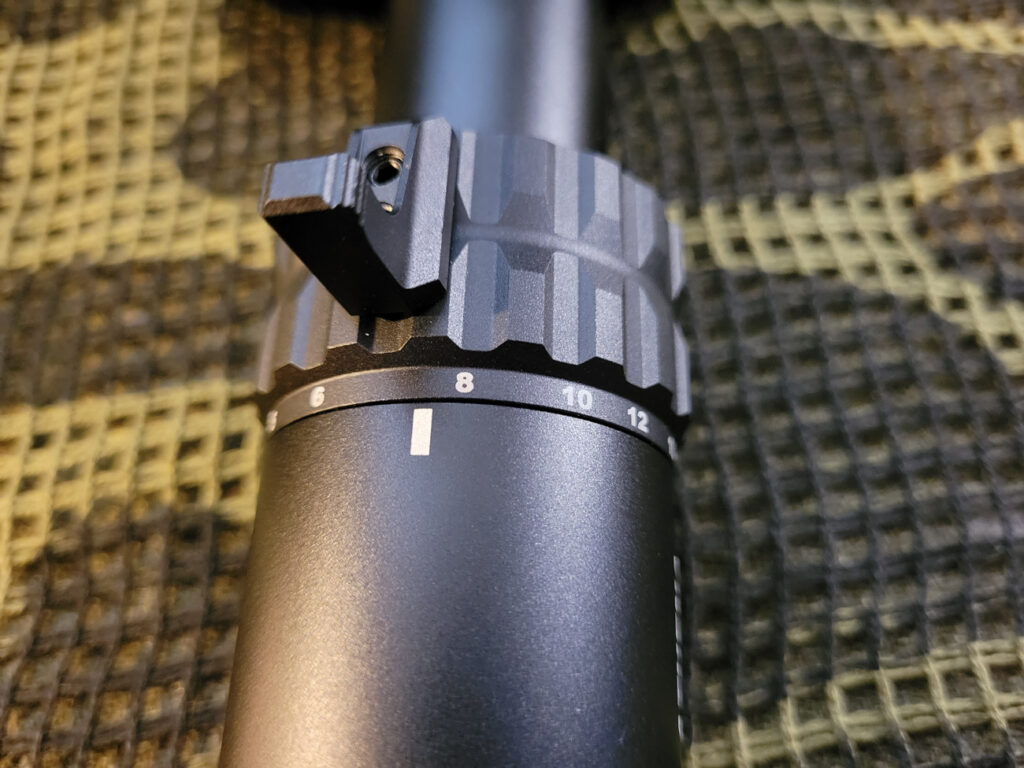
Primary Arms has some of the best reticle designs on the market, and this is no exception. Throwing in illumination, in a first-focal plane, and a comprehensive reticle with ranging capabilities is nothing short of impressive for an optic at this price range and quality. They install the same throw lever that was on the SLx 1-6×24 I reviewed in a past article, which would be somewhat convenient if I ever miraculously lost my throw lever for whatever reason. The zero-stop also came installed in the scope and it cannot be taken out to my knowledge (even if you could, you probably shouldn’t). Even though the zero-stop can’t be removed, it does not interfere with the scope going through its full elevation adjustment.
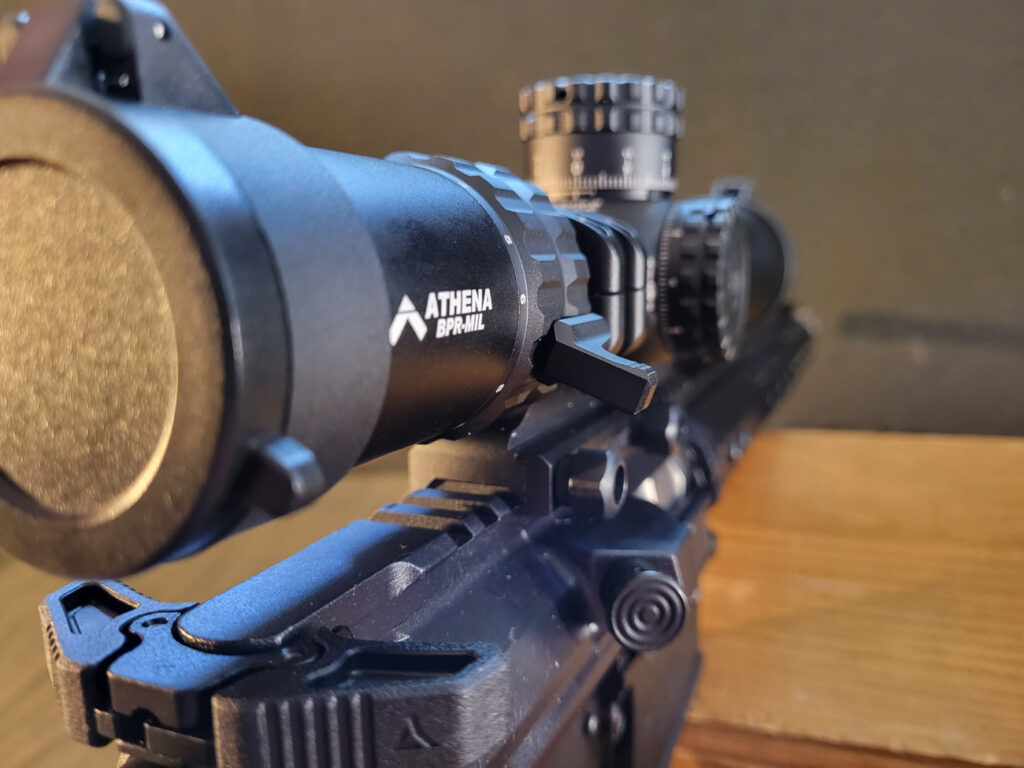
The cool factor of this scope is mostly built into the reticle. Half the features I mentioned above all had something to do with the reticle, and that’s ok. Hunters will thoroughly enjoy taking this scope hunting with the illumination and the capped windage turret option. Also, keeping the optic around 10x keeps the glass clear and not as busy compared to 18x. Steel shooters like myself will take advantage of the grid that’s included in the reticle and the many holdovers you can utilize when engaging targets. BOTH parties will be happy to learn that you can range your target using the reticle without the need for a calculator or using any math skills. The ranging system accommodates targets that are either 5’10” or 18” wide, which is extremely applicable in hunting and steel situations. You can drive the turrets for quick and efficient target transition, acquisition, and engagement at different ranges, but you also have the option of keeping the scope as a hands-off option that requires little to no dialing through utilizing the reticle system. What I love about the SLx 3-18×50 is that it’s a scope that works as the shooter wants it to rather than a shooter who needs to change their mindset in order to shoot the optic. Now that we’ve gone through the features of this scope, it’s time to put it through its paces. The tracking and accuracy test will be first.
Tracking & Accuracy
I’ll admit that I ran into a little trouble trying to test the tracking on this optic. The ammo I was using turned out to be an inconsistent batch, and I ended up putting the optic on a second rifle to verify that this scope tracked properly. The cantilever mount I was using also turned out to be either torqued incorrectly or a lemon. My first box test turned out looking like this:
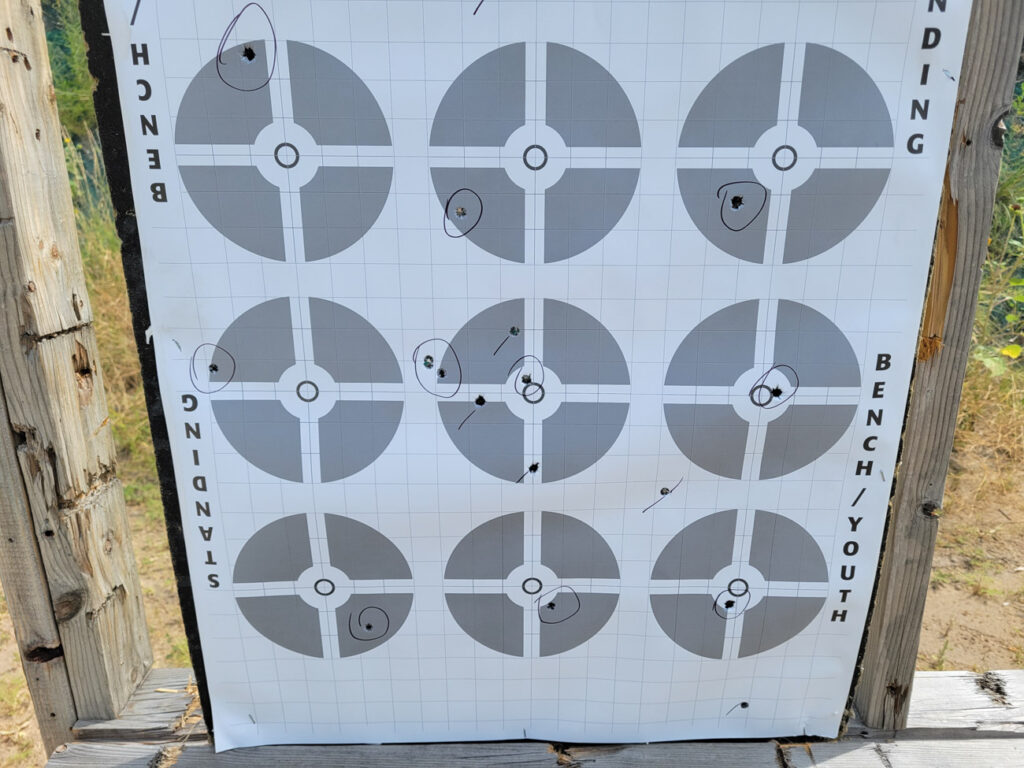
My rifle was essentially throwing groups in two different spots, as you can tell from the two circled groups in the center target. If you look at the surrounding targets, you’ll see that my rifle threw a round at one of the two spots where it was shooting groups. This didn’t worry me at all, but I do plan on obtaining some better ammo for future testing. This test was done on my LR-308 which placed the optic under recoil and stress from the many moving parts in an AR platform. You’ll see my sight in shots have a line through them, and the box test shots are circled. In order to verify my results, I placed the scope on my bolt 308 (with a verified better scope mount) which I have custom hand loads for. The second, smaller tracking test looked like this:
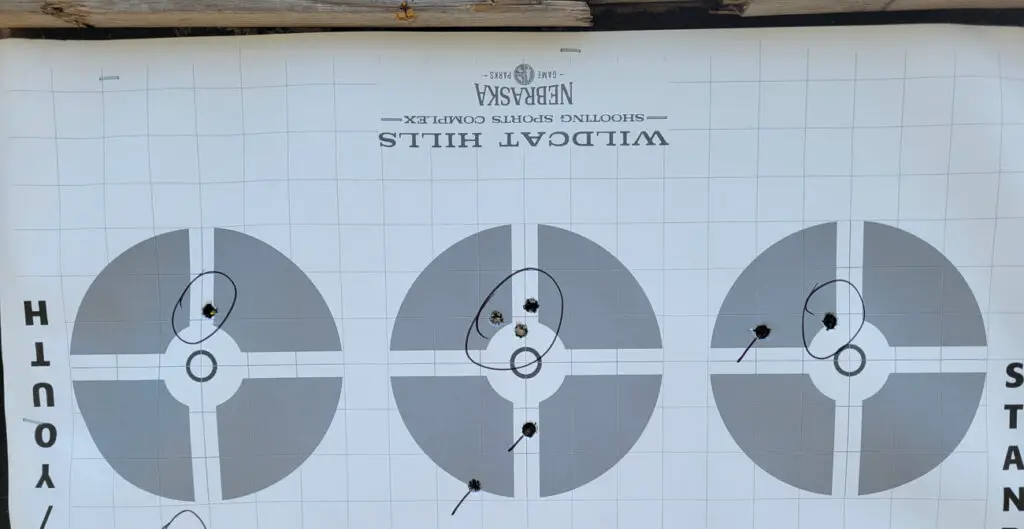
Before I mounted the scope on the bolt rifle, I made sure to drop it onto concrete to test the durability of the optic. After dropping and mounting it, the SLx performed very admirably in the smaller tracking test. Yes, it was only 3 targets compared to the 9 I used in the first test, but it was enough to confirm that the scope worked exactly as it should have. Moving forward, I have all the confidence in the world that this scope will track as accurately as I need it to. The windage turret was a little mushy in the clicks, but overall, the turrets were very nice to test with.
Before moving on to the durability test, I thought I would throw in the travel the turrets have on the SLx 3-18×50. Primary Arms advertises 100 MOA in elevation adjustment and 64 MOA in windage adjustment. Counting clicks, the scope ended up having 114 MOA in elevation adjustment and 80.75 MOA in windage adjustment. Now, I’m not sure if the reticle was moving past the advertised range, but I have no doubt that this scope has AT LEAST the travel that Primary Arms says it does. Just for the math nerds, the exact number of clicks in MILs that were observed was 33.4 MILs in the elevation turret and 23.5 MILs in the windage turret. With that confirmation of travel in mind, let’s see how we tested the durability of this scope.
Durability
My scopes never have it easy. This one had to sit through 60 rounds of semi-auto 308 while being placed in a bad cantilever mount. If you ever experience a bad set of rings or a bad mount, it could seriously damage or negatively affect your optic. The SLx took those 60 rounds, got mounted into a tried and trued cantilever mount, and kept true and accurate. Even after it was dropped on concrete, the scope brushed it off like it was nothing and held some great groups at 100 yards.
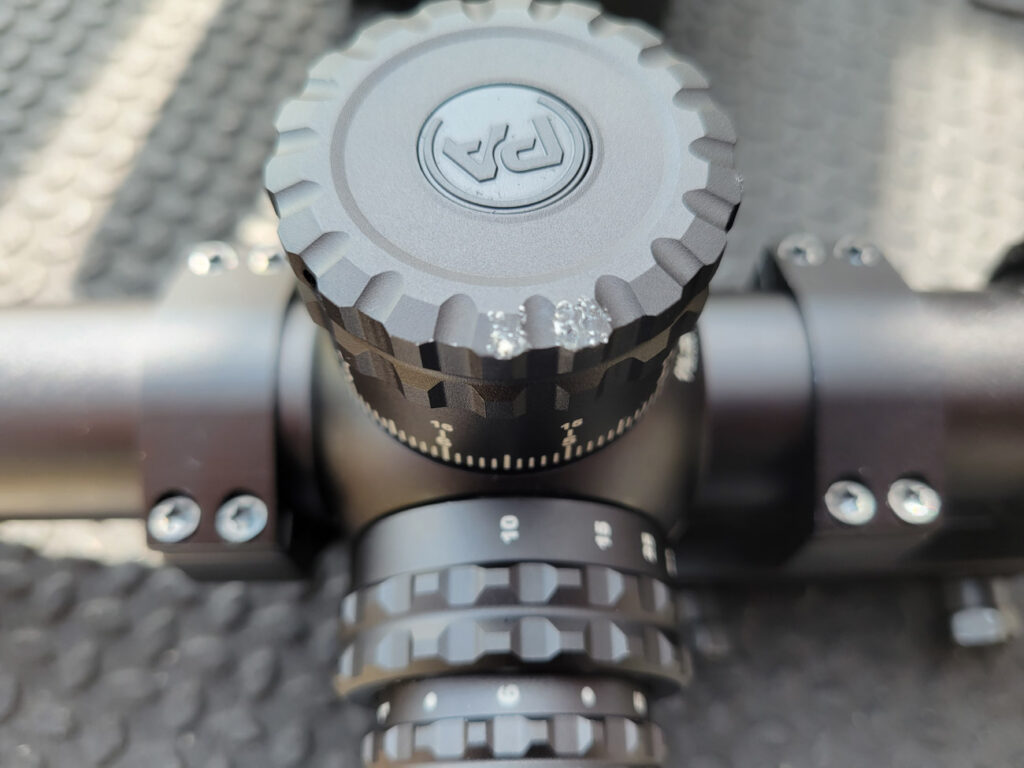
If your optic comes with those flip-up caps, you should keep those on your glass no matter what. Always have a way of protecting your actual lenses. I drop my scopes as they come in the box, so manufacturers have been smart by including scope caps installed on their scopes. I also always drop my optics on the elevation turret. This way, there will always be a full force placed on at least one part of the scope I’m testing. I could also see the turrets being a major weak point that can be more easily broken than other parts of the scope.
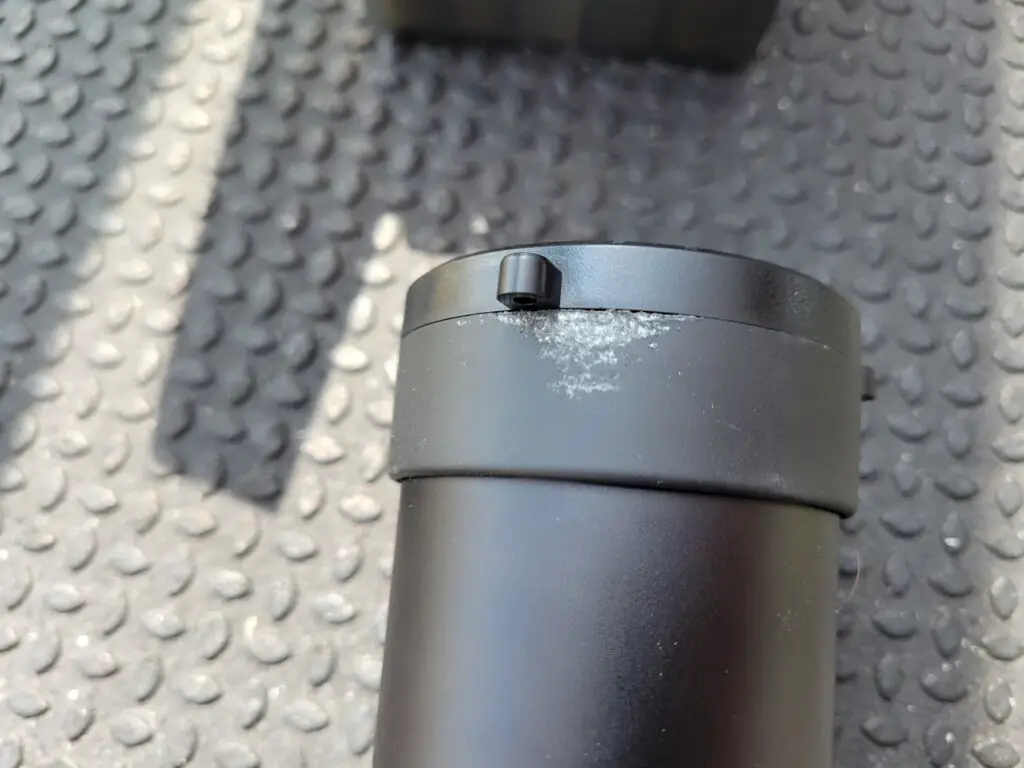
Overall, I couldn’t be happier with how this scope took its beating. It always makes me hold my breath whenever I drop these, but I need to find out if it’ll survive before I can recommend any glass to anyone reading my articles. Now that our testing is done and the scope has passed, let’s talk more about what you’re getting for the price tag.
Glass Clarity
First Focal Plane optics can often be handicapped when equipped with a large magnification range. Some people would notice that the reticle would be unusable at the lowest power or be too thick and broad at the highest power. Being a scope that has 3-18 power, this is a very comfortable spot for FFP capabilities. This scope has extremely mild cases of image distortion and chromatic aberration, but it’s something that isn’t noticeable unless you’re looking for those defects. It certainly doesn’t handicap the optic in any way.
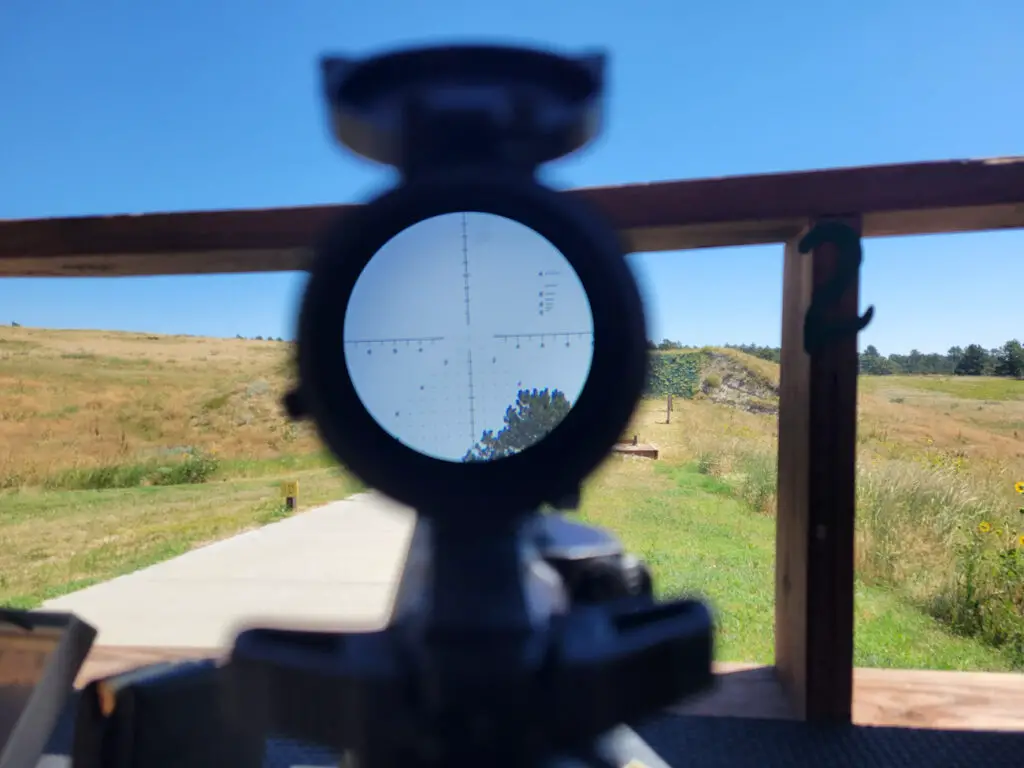
The reticle and glass clarity pair really well together. I had no issues counting pine needles on a tree 300 yards from my front door. I also like to look and read one of the hotel signs that are around 600 yards out of my kitchen window. The sign was readable with no struggles. In all reality, this scope’s glass clarity is extremely comparable to other optics that hover around this price range. I can easily see myself taking it out to 1,000 yards and would have no issues recommending it for hunting purposes. The only thing I would comment on is that the free glass real estate you have that does not include holdovers is somewhat slim if you’re using the scope on 15x or above. If you’re using this scope to spot other people, all you have to do is use the upper half of the glass, and you’ll be fine.
The ACSS Athena BPR MIL Reticle
Every Primary Arms reticle I end up testing makes me want to test more of their reticles. While this scope does not have pre-set holds that are specific to a caliber or cartridge, it does a great job of offering a universal option to the enthusiast that doesn’t just shoot 308 or 223. Primary Arms does, however, have this exact scope with reticles that are specific to 308, 6.5 Creedmoor, 224 Valkyrie, and 6.5 Grendel. In elevation holdovers, there are 15 MILs from the center point to the bottom post of the scope. In windage holdovers, you have 10 MILs from the center point to the left-most side of the scope and another 10 MILs from the center point to the right-most side of the scope. Adding this to how much adjustment is already built into the turrets means you get a crazy amount of MILs to obtain holdovers from.
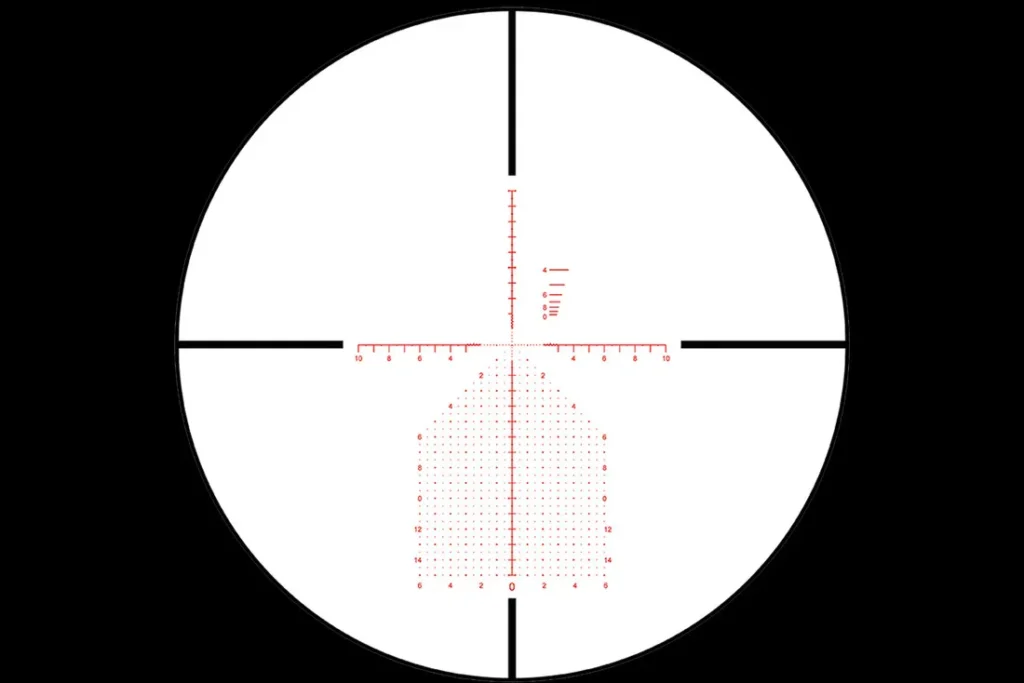
To put this all into perspective, my 6.5 Creedmoor loads drop somewhere around 11 MILs when shooting at 1,000 yards. Utilizing the reticle in my scope, I can decide to dial 5 MILs from my turret and hold the rest of the way there. If there’s wind, or if I need to hold for windage, there are 6 MILs worth of wind holds on either side of the central line that go all the way down the reticle. This would be a fantastic long-term option to put on a rig for long-distance shooting. For the hunters reading, this would also be a great option if you don’t want to dial your scope very much. For ethical hunting distances, you wouldn’t need very much of this reticle to hold for that perfect shot at the right distance.
One thing that’s noticeable with the Athena reticle is that it is busy. While doing my box test for tracking, it was sometimes tough to see my previous hits because they can sometimes be covered up by holdover dots. They also look similar, so I had to focus to make sure I didn’t mistake an impact for a holdover dot. As you’ll read later in the article, this busier reticle might not fit a beginner shooter who needs to focus on fundamentals and not on focusing on the reticle more than focusing on the target. Regardless, the Athena reticle from Primary arms is an extremely useful tool.
Pros and Cons
In my reviews, it’s often discussed that some scopes are best for beginners, and other scopes are best for more experienced shooters. Once the beginner starts getting more and more experienced, they can start shopping for a scope to upgrade to. The Primary Arms SLx 3-18 is one of those optics I would upgrade to after my beginner phase.
- Comprehensive Reticle
- Optional Capped or Exposed Windage Turret
- Good Brightness Scale on Illumination
- Great Hybrid Scope Capabilities
- Fantastic Scope to Upgrade Into
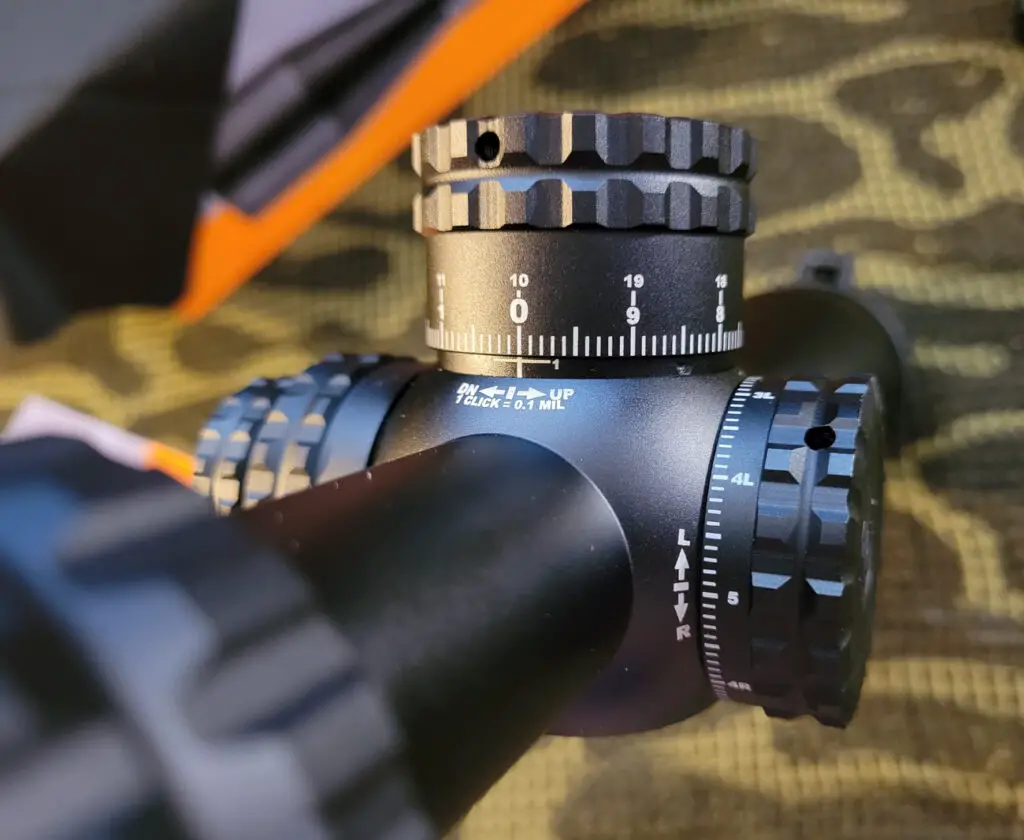
The replaceable windage turret on the SLx is a unique solution to a problem that many manufacturers are trying to solve right now. Dare I say, it’s probably the smartest I’ve seen yet. Some people may not be a big fan of the exposed elevation turret, but that’s mostly because people don’t like ideas that go against their habit of running capped turrets. Either way, this scope offers an extremely valid hybrid option for any user. The only other argument I would accept is that hunters prefer second focal plane optics, and while that’s true, this is still a great option for any hunting rig.
To wrap up the pros, the Athena reticle in this particular model is one of my favorites. It is only offered in MILs, but it would be worth the time of learning how to run MILs so you could operate the SLx. The reticle, along with all the other features, would make this a killer option to upgrade your current rifle scope.
The SLx was extremely enjoyable to test out, but there are some negatives that need discussing before moving on. Every scope has its flaws, and that’s a big reason why I love reviewing scopes at this price range. There are always two sides to the story, even if the con list is extremely short. Here’s my list of the negatives I noticed while testing:
- Overall Weight
- Turret Adjustment Lines Don’t Match Up
- Not a Beginner’s Scope
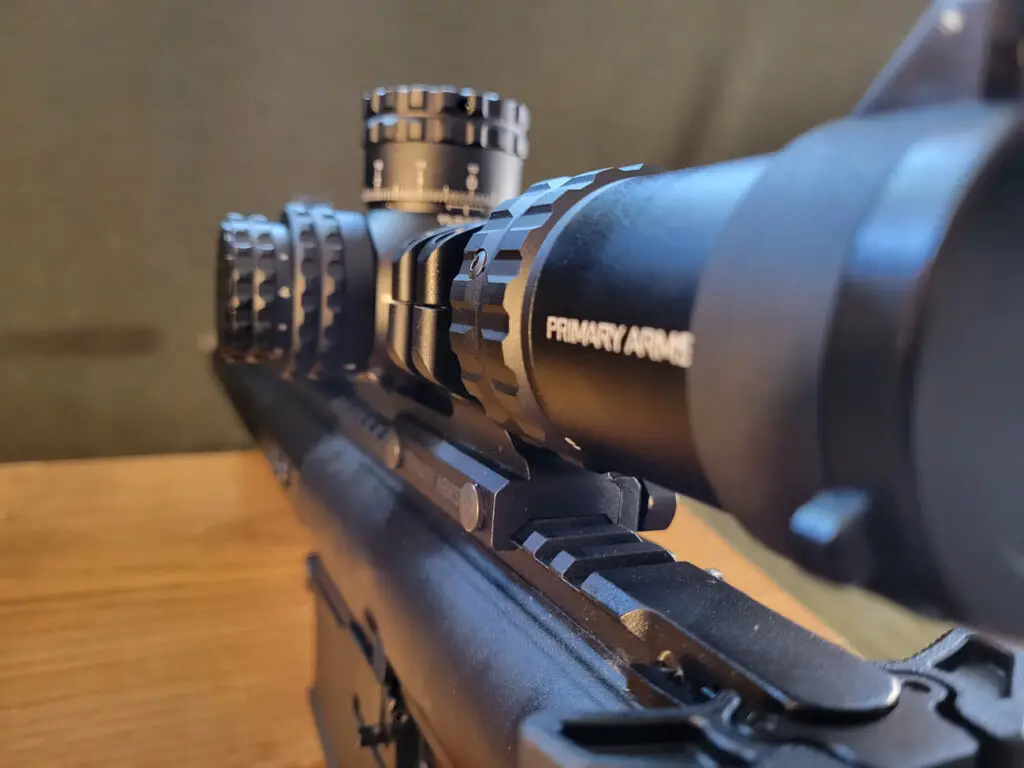
Cramming all of those really nice features into one scope always means one thing: more weight. At 32 ounces (mine measured just over that) this optic weighs right at 2 pounds. This might be a big detractor with the hunters who have to pack their gear for miles just to get the perfect shot. Many of those hunters like their rifles to float around 9 pounds or less, and unless you’re running carbon fiber on your gun’s barrel and stock, I could see this scope pushing most hunting rigs over that 9-pound mark that some hunters have as a max weight threshold.
Another con that isn’t even bad is that this is not something I would recommend to someone starting out with optics. I would feel more comfortable recommending something to a beginner that they can learn their rifle system with. If the 3-18×50 SLx gets put in beginners’ hands, they would not be able to use the optic to its fullest capacity which may detract from the overall value that scope would have to the shooter. Maybe it would be a great option for a shooter to grow into, but I didn’t wear jeans that were too long as a kid because I knew I would eventually trip on the pant legs. This scope is a fantastic option to put on your rifle, but there are simpler optics out there for those that are looking to dip their toe into shooting.
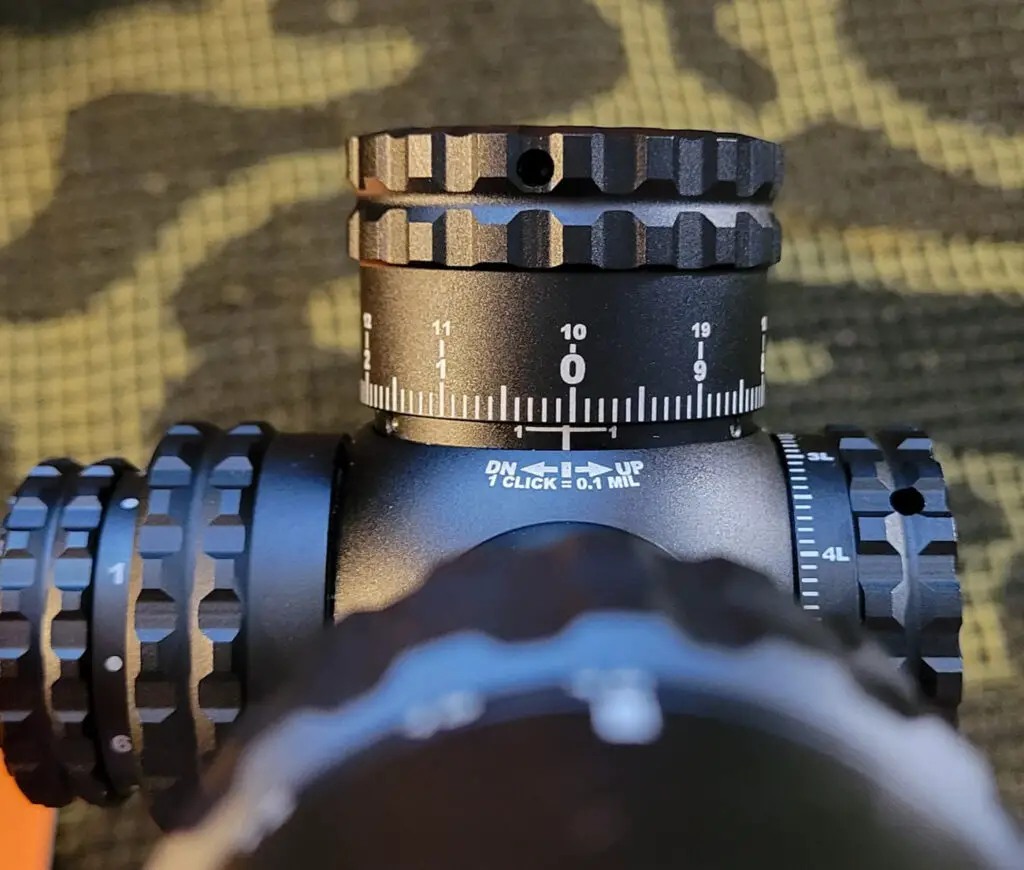
Really, the last con is just something that’s somewhat annoying. The lines on the turrets for both windage and elevation didn’t line up with the guide marks on the body. This is evident in some of the pictures. While this isn’t really a massive deal to me, it does make me count my clicks out when working the turrets, because I can never tell which mark the guide mark is pointing to. This may vary from unit to unit, but it was a glaring nuisance during testing.
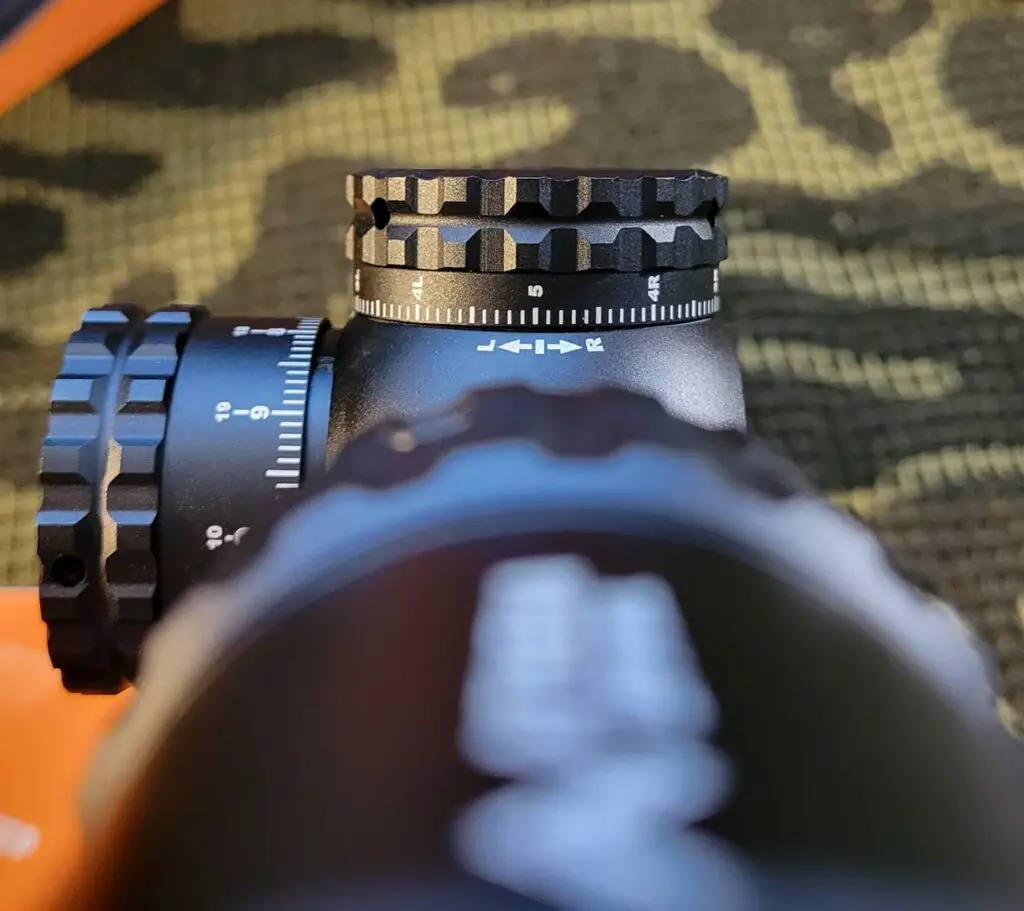
Application
There are many “hybrid” scope options that manufacturers have released into the market recently. Of all the sights I’ve had the chance to handle so far, the Primary Arms SLx 3-18×50 is a tough competitor out there for one of the best options if you’re looking for a “do-all”. I would feel just as comfortable putting this on my hunting rifle as I would putting it on my benchrest gun. Though the reticle might be a little busy for hunters, I have found it to be manageable when keeping the scope at the proper magnification.
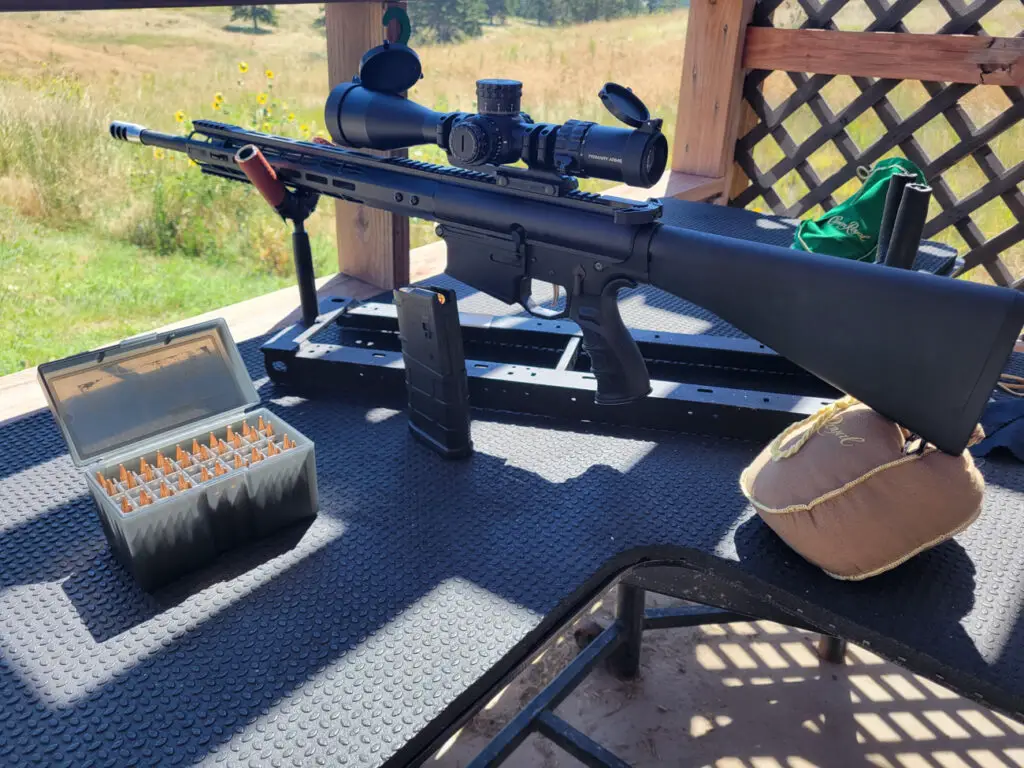
A 308 or other intermediate cartridge would be the perfect pairing for this scope. Since this was on both my LR-308 and my bolt 308 I could’ve taken this hunting, gone to the range to shoot steel, or used either firearm for load development. Because it’s a safe price that has a lot of features, the application is really whatever you want out of the optic.
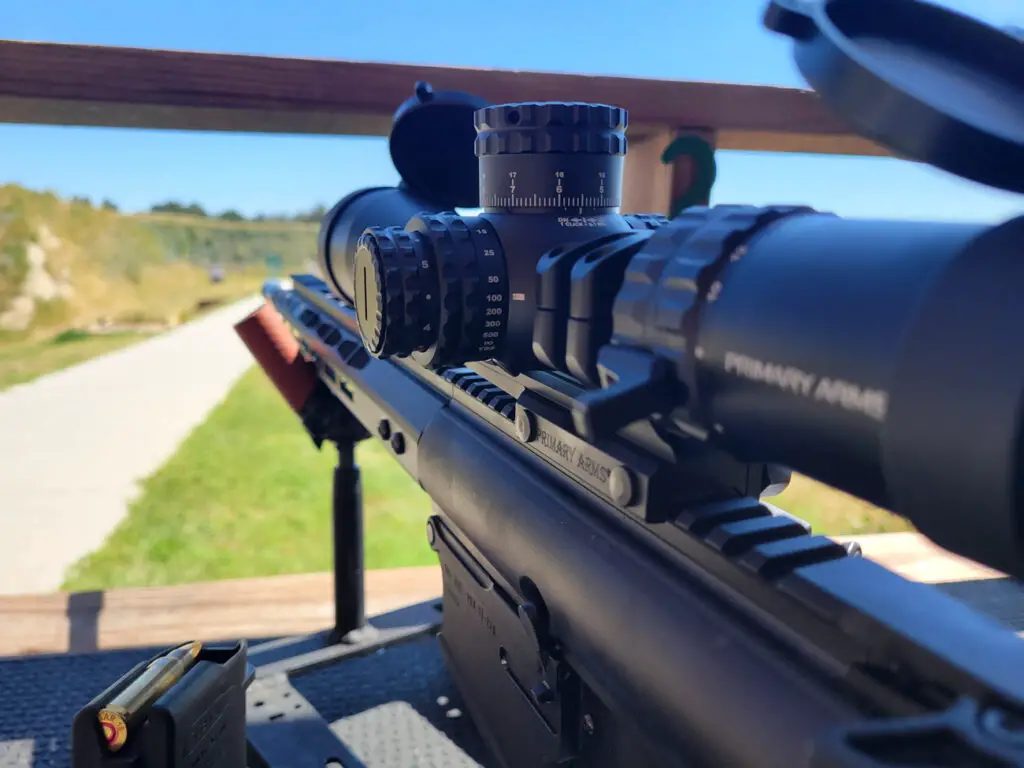
Final Thoughts
The Primary Arms SLx was an impressive optic to review. At a price point of $500 directly from the manufacturer, this is a great price for a scope that packs so much into the price.
Other scope manufacturers have tossed their hat in the ring at this price point and feature point, but of all the ones I’ve handled, the Primary Arms SLx is in my top 3 favorite optics. I’ll be looking forward to seeing what other optics Primary Arms offers at their different price points, but if you’re shopping for your next scope upgrade, you need to take a look at the Primary Arms SLx 3-18×50.
With their offerings of other reticles that have ballistic holds for specific cartridges, the SLx line of optics is one you should have your eye on. With the reticle technology available and the clever solutions, this will not be the last Primary Arms optic that gets put on one of my guns.

Growing up, Buck was taught about firearm history and appraisal. Getting to know so many different firearm platforms eventually lead to his long-distance shooting exploration. While his main hunting past time is coyotes, he still find just as much satisfaction punching steel at distance. Every shot taken is with the purpose to become a better shooter.
